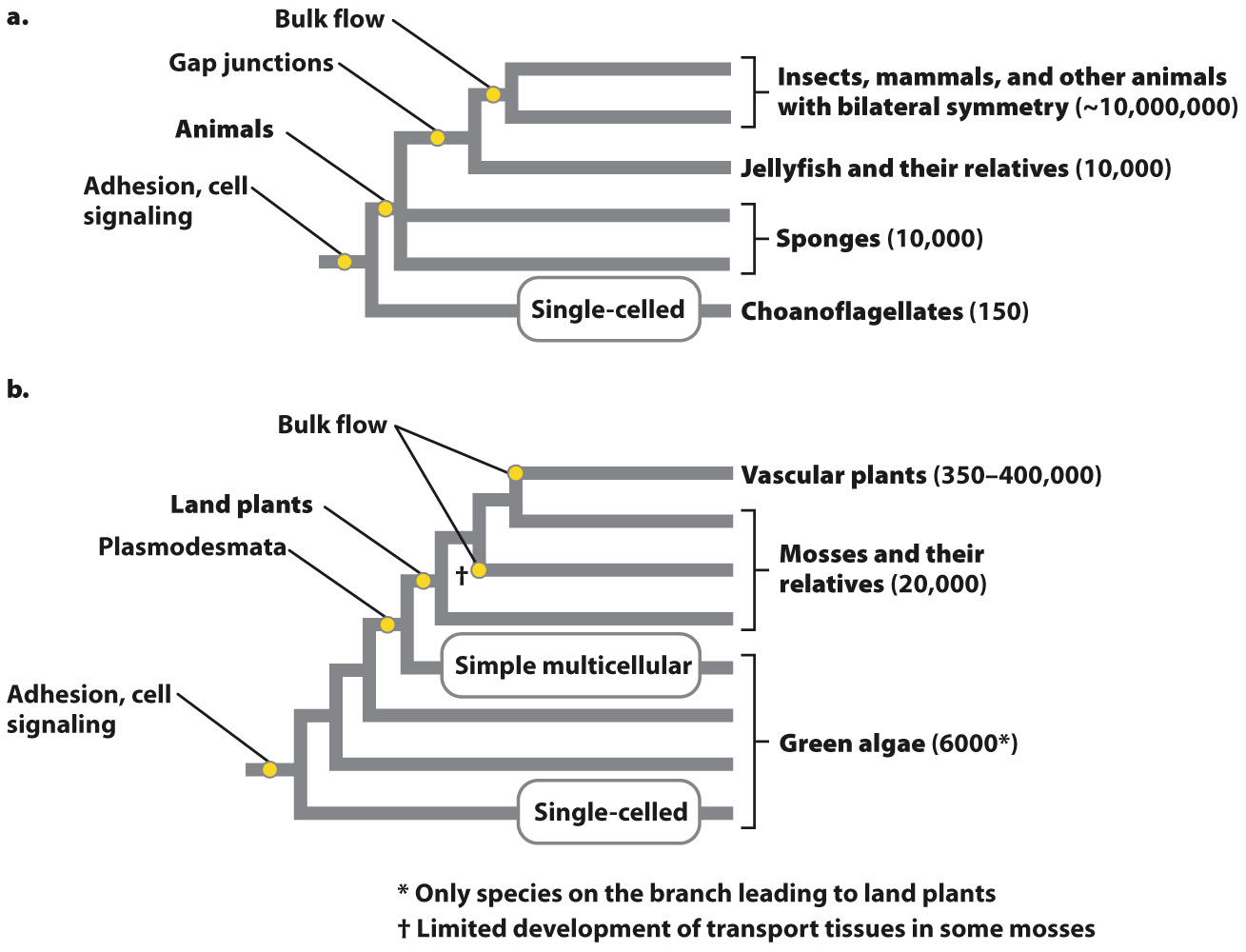28.5 The Evolution of Complex Multicellularity
The differences between an amoeba and a lobster seem vast, but research over the past decade increasingly shows how this apparent gap was bridged through a series of evolutionary innovations. Throughout this chapter, we have emphasized that complex multicellular organisms require mechanisms for cell adhesion, modes of communication between cells, and a genetic program to guide growth and development. These three requirements had to be acquired in a specific order. If the products of cell division don’t stick together, there can be no complex multicellularity. Adhesion, however, is not sufficient. It must be followed by mechanisms for communication between cells. Moreover, cells must be able to send molecular messages to specific targets or regions, assisted in animals by gap junctions and in plants by plasmodesmata.
With these requirements in place, natural selection would favor the increase and diversification of genes that regulate growth and development, making possible more complex morphology and anatomy. The biological stage was finally set for the functional key to complex multicellularity: the differentiation of tissues and organs that govern the bulk flow of fluids, nutrients, signaling molecules, and oxygen through increasingly large and complex bodies. This differentiation freed organisms from the tight constraints imposed by diffusion. When all these features are placed onto phylogenies, they show both the predicted order of acquisition and the tremendous evolutionary consequences of complex multicellularity (Fig. 28.12).
